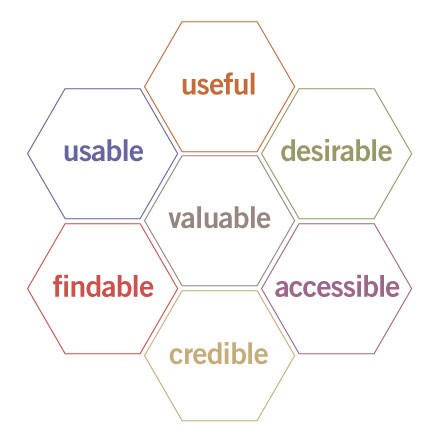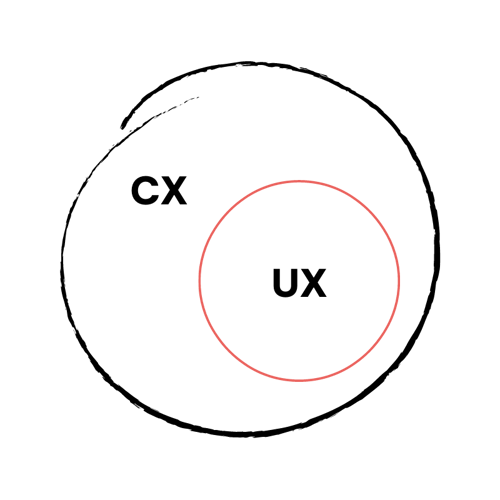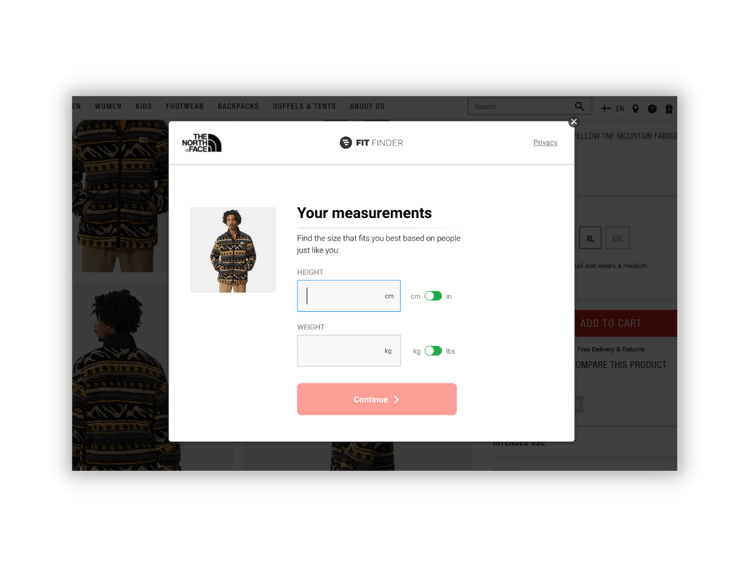We all can tell when we've had a bad user experience. Most of us can also recognize whether a website, web application, software, or product has provided a great user experience. However, not many people can describe in concrete terms what makes a positive user experience so intuitive and pleasant.
And that's what makes the user experience such an interesting subject. A great UX 'just works', but what are the similarities between the best websites and user experiences?
While not everyone needs to be a UX specialist, being familiar with and understanding the basics of user experience is a valuable asset for anyone doing e-commerce. Simultaneously we recognize that UX design is practiced in several areas of business, we note that in this article, we observe user experience mainly from a web design perspective.
What is user experience?
User experience (UX) is pretty much exactly what it sounds like: what do people experience when they interact with a website, app, software, or product. User experience is people's feelings and perceptions during the interaction.
In a holistic approach, UX designers take into account the person, the device, the moment, the ethnographic environment, the physical space, as well as human behavior and psychology. This can include looking at users' attitudes, emotions, motivations, abilities, triggers, etc. when designing user experiences.
Furthermore, a holistic user experience design recognizes that the entire experience is often not limited to digital interfaces but is a mix of digital, brick-and-mortar, and human-to-human interactions. (Interaction Design Foundation)
UX professionals aim to influence the user's experience, but there will always be things out of their control. This is good to keep in mind while continuing to topics we can affect.
Elements of website user experience
Peter Morville has created a widely referred framework for user experience, rightly pointing out that user experience is not a one-dimensional phenomenon. The following elements can guide you when designing and optimizing your e-commerce website.

Useful
Usefulness is formed by the combination of usability and utility and refers to a website's relevance for your audience and the ability to fulfill their needs.
Superb usability is pointless if the website doesn't have what the user wants. For example, it's missing a specific product. On the other hand, if achieving the desired result is possible but requires too much effort, the user will never make it to the purchase.
So, to make your website useful, fill it with content and products that your customers want and make it easy and pleasant to use.
Usable
Borrowing the definition from Nielsen Norman Group: "Usability is a quality attribute that assesses how easy user interfaces are to use."
Many factors form a website's usability. A lot comes down to the design elements shaping the efficiency of user interaction, such as website navigation, site structure, and website performance. However, a straightforward user interface and graphic design also impact usability.
And don't forget the basics. Ensure all your site's links are working and the user experience is mobile-friendly.
Desirable
While the lion's share in user experience design focuses on the efficiency of user interaction, we shouldn't neglect the value of visual design elements such as image, identity, brand, and other aspects of emotional design.
If users find your website more visually appealing than other websites, they are more likely to do business with you when other aspects of the user experience are equal.
Findable
If the users get lost on your website, they'll leave.
The first rule in e-commerce is that if your customers can't find a product, they can't buy it. So, make sure your website's navigation system is logical and makes finding the right pages easy and effortless.
Learn more about building better website navigation →
Accessible
By improving your website accessibility, you ensure you're not losing potential customers and provide everyone an equal chance to use your website.
Accessibility is an essential aspect of user interface design. To make a website accessible, a UX designer considers the people with a disability or who would otherwise benefit from customizing the user interface to suit their preferences better (e.g., language). Screen readers, a technology that helps people who have difficulties seeing, are an excellent example of improving the accessibility of a website.
Credible
Without trust, there's nothing. People get scammed on the internet, which erodes people's trust in unknown online stores. So, if you don't want to get hit by this mistrust, start by having your (updated) contact details visible and sprinkling some social proof (e.g., in the form of customer references) around your website.
Valuable
Why should users do their business on your website instead of other websites or visiting your retail store? What value can you provide to your users that make them come back again and again?
Your website can provide a valuable user experience if it, for example, saves your users time compared to visiting your retail store. You can increase the value even more by offering same-day delivery as the users get the ordered products faster.
User experience vs. Customer experience
User experience differs from customer experience (CX) in the sense that user experience is considered in the context of a specific product or service. In contrast, customer experience is defined by a person's experiences with a brand in a broader context. Essentially, user experience can be seen as part of the customer experience.
Where, for instance, good website UX enables finding information fast on a website, good CX creates positive feelings about the overall experience with that company.

What is UX design?
UX design is the process of figuring out what your customers need and finding the best and most efficient way to give it to them. UX design work can include, for example, studying user behavior, building wireframe models of website structures, and finding better ways to deliver information via text, image, video, or other means.
Everything related to user experience starts with people. One way to learn about the users' needs and preferences is to perform user research. Based on user research, UX designers aim to get a deep understanding of the users, which helps throughout the entire process.
User interface design as part of UX design
A common question for non-UX professionals is the difference between UX and UI design.
In short, UX design focuses on the whole user journey to solve a particular problem. Much of this UX work is to understand the users' needs, goals, and preferences through user research. Based on the understanding of the typical customer, UX designers map out potential user journeys and information architecture.
On the other hand, UI design focuses on bringing wireframe models to life through individual screens, graphic design, and other design elements users face in human-computer interaction. However, UI design is not only about visual design. UI designers have a significant role in making websites usable and accessible for everyone.
For example, UI designers can choose color combinations that enhance text's readability and suit color-blind people or pick a font family that helps users skim websites and find information faster. These and other design decisions have a crucial role in what the overall user experience will look like.
Both UX and UI design are needed to deliver the best possible user experience. They complement each other, and getting both aspects right is the only way to achieve a competitive advantage.
A Ferrari is not a Ferrari without an engine, but not without the looks either.
What makes a great user experience?
There's no simple answer to what makes a great user experience because feelings and perceptions of how people experience your site are always subjective. However, as we have learned, the attributes that form the user experience are objective. As you can't please everyone, it is essential to understand what your target audience wants to experience when interacting with your site.
Furthermore, the type of website significantly impacts how we perceive a great user experience. On some websites, we enjoy browsing back and forth and taking our time exploring the content. For example, a camera enthusiast like me can get a great deal of pleasure from browsing different lenses and comparing features even if I don't intend to buy anything.
On the other hand, if a person wants to buy a movie ticket online, a more straightforward user flow is likely to deliver a better user experience. It all depends on the context and understanding of the user behavior.
Generally, a great user experience is easy to figure out and intuitive. Everything starts from a deep understanding of your customers. What do they want to achieve when they interact with your company?
When that's clear, it's much easier to design user experience and define the business goals for your website.
What makes a good e-commerce website →
The goals of UX design
Previously, we introduced the seven UX design elements. Approaching user experience through these seven elements gives you a good starting point to create a great website. But why do we spend so much time honing our websites? Next, we'll take a look at the objectives of UX design.
Help users to get what they need
When you get right down to design principles, you hope to do more of what your customers want and need and less of what they don't. The main goal of UX design is to understand users better.
Remove workload
Don't make me think - Steve Krug
As Steve Krug's classic says already on its cover, people are lazy, and they don't like thinking. Therefore, UX designers should aim to make user experiences as efficient and straightforward as possible.
Make it fun
When your users have fun while interacting with your website, they are more likely to enjoy the user experience. There are many ways to add a little twist to the user experience, such as lively product descriptions, beautiful pictures, gamification elements, and so on.
Make it sticky
In today's competitive landscape of e-commerce, where consumers are not particularly short of options, stickiness is extremely difficult to reach. But guess what's is your best chance to achieve it. That's right - it's the excellent user experience throughout the whole user journey.
Get people to spread the word
Your brand is what other people say about you when you’re not in the room - Jeff Bezos
Word of mouth is perhaps the most effective form of marketing. Companies that succeed in harnessing the power of their users as their promoters open the sesame to growth.
So, together with the marketing department, the ultimate goal of UX design is to get people to say out loud that their user experience with your business was out of this planet.
How does improving user experience help achieve your business goals?
Good design is good business - Thomas J. Watson
It's not a secret that companies investing in UX design reach and exceed their goals more frequently. The maths are simple: good user experience makes your customers happier, and usually, satisfied customers mean better business.
Good user experience improves customer satisfaction
When you surf the internet, you're naturally more drawn to websites that provide a positive user experience. For example, everyone shopping online can relate to the struggle of finding the correct size. It's pretty evident that knowing the size you order will fit improves the customer experience and customer satisfaction.
UX designers who recognized this customer pain point have developed solutions to solve this drawback of online shopping. Just adding a small note: "Our model is 6'00" tall and wears a size large" next to the product images can do the trick. But if that's not enough, a company called Fit Analytics was born to solve the sizing problem and help the world of e-commerce provide better user experiences by connecting customers with clothes they'll love.

Longer customer relationships
It takes time to build long-term customer relationships. Still, if we believe that the Pareto principle applies to 20% of your customers generating 80% of your revenue, customer loyalty should be your number one priority.
People don't particularly enjoy searching for information, so once they've found a solution that works for them, they'll keep coming back to it. Satisfied customers turn to loyal customers who tend to return to your site whenever they need a solution they know you can provide.
Better conversion rates
Although UX designers approach the different touchpoints of a company from the customer's perspective, they are always guided by a clear business objective. One of the most common objectives is to improve website conversion rates.
When the website has everything a great user experience is made of, and it's easy for the customers to get their problems solved, of course, they're likely to do business with you. Actually, 400% more likely.
The most righteous form of search engine optimization
There are so many ways to optimize your website for search engines. Some of them create more value for an end-user than others. However, enhancing your website's user experience and making it user-friendly is the most valued SEO tactic by both search engine robots and real website visitors.
You might learn something
A user-centered design approach can teach you a thing or two about your customers. The way they think and want to consume your products and services. Knowing what your customers want and fulfilling their needs better and before competition helps you win the market.
Better ROI and increased revenue
When you add up all the benefits mentioned above, it becomes clear that an investment in user experience will certainly pay itself back. According to Forrester research, experience-driven businesses have better brand awareness, better return on ad spend, cheaper customer acquisition cost, higher average order value, more repeating visitors, and the list goes on.
Conclusion
There's no reason to write lengthy conclusions as the bottom line is:
Create better user experiences for your customers, and your business will do better.
And don't settle for one-off successes. Improving the user experience is about constantly learning new things about your customers and optimizing the customer journey over time.








